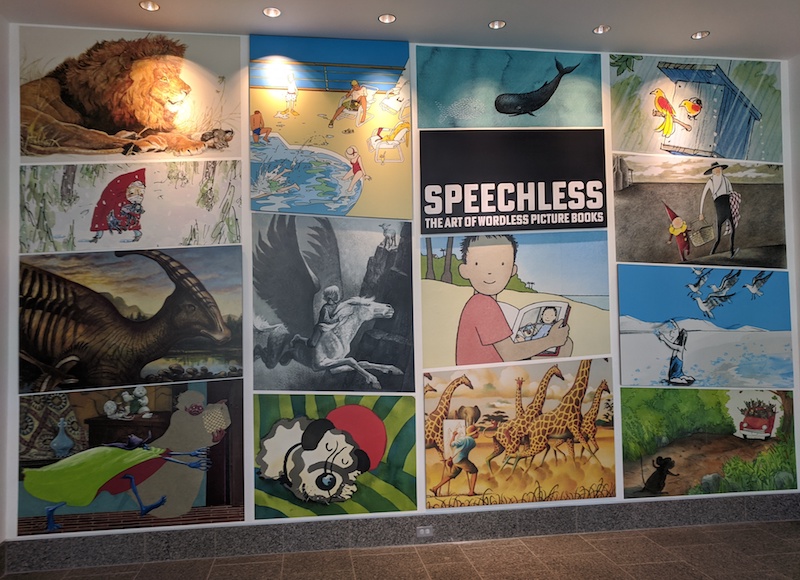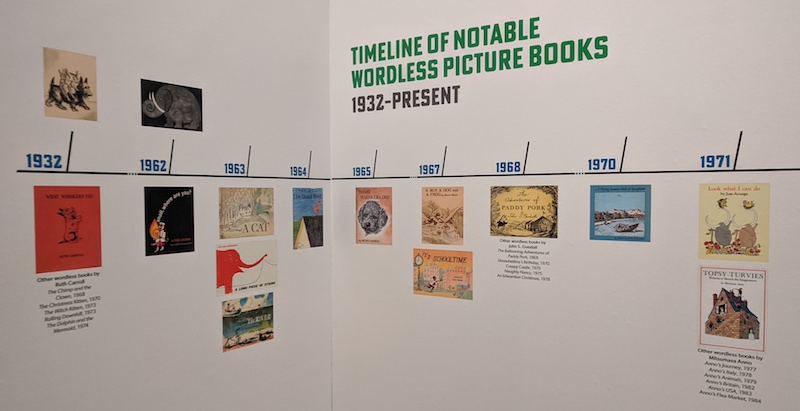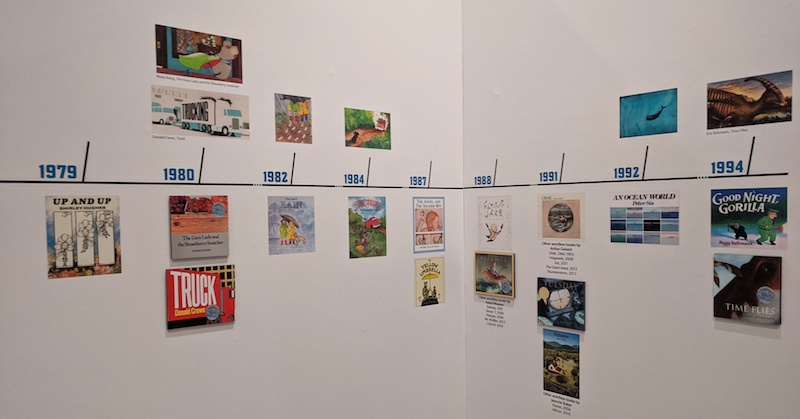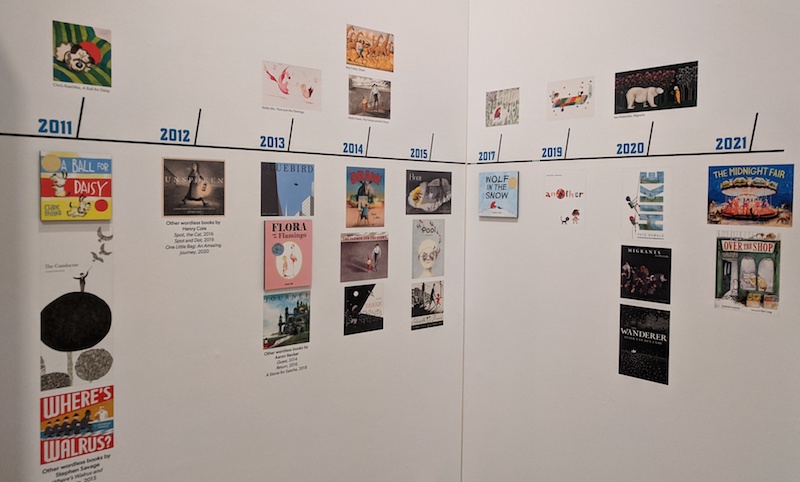
I have been eagerly awaiting the new exhibit at the Carle Museum, “Speechless: The Art of Wordless Picture Books” (July 17-December 5, 2021), and today I got to go and hear guest curator (and Caldecott-winning wordless picture book creator) David Wiesner give a tour of the exhibit, from the earliest wordless picture book published in the U.S. (What Whiskers Did by Ruth Carroll) to some of the amazing work contemporary creators (Jerry Pinkney, Marla Frazee, Chris Raschka, Suzy Lee, Christian Robinson!) are doing now.

Wordless picture books taught me how to read pictures. Before wordless picture books, my visual literacy simply wasn’t very sophisticated: when reading comics, graphic novels, picture books, or any other format or medium that mixed text and visual art, I focused on the text, only glancing at the images or searching the art for information if the text was confusing. Wordless picture books forced me to slow down and absorb the story another way – by reading the pictures. As it said on the wall next to Tana Hoban’s photographs, “The more we look, the more we see.”
One of the first wordless picture books I read as an adult – and still one of my favorites – was Journey by Aaron Becker. Journey is the first in a trilogy (Quest and Return are the others, and equally entrancing). Becker’s art isn’t included in this exhibit, except on the timeline (see photos below), but plenty of other wonderful artists’ work is: Molly Bang, Peter Spier, Barbara Lehman, Shaun Tan, Peter Sis, Molly Idle, Raul Colon, Matthew Cordell, and others.
Together, the group discussed how wordless picture books can be wonderful springboards for English learners, and generate far more language between adult readers and child listeners than picture books with text, because both readers are using their imaginations to co-create meaning. The art and stories in wordless picture books are “put out there for any reader to respond how they want,” says Wiesner; wordless books release readers’ imagination. For adult readers who may be new to wordless picture books and wonder when to turn the page, Jerry Pinkney (Lion & Mouse) advises, “When you’re ready!”
Below, I’ve included pictures of the “Timeline of Notable Wordless Picture Books” from 1932 to the present. There’s also a helpful document on “Tips for Reading Wordless Picture Books” that was included in the exhibit.






If you live in (or are traveling through) Western Massachusetts, I highly recommend this exhibit. If not, I encourage you to check out wordless picture books from your local library (or buy them from your local bookstore!) and truly spend some time paging through and reading the pictures. Here is my collection of wordless picture books I’ve read and reviewed in LibraryThing.
Enjoy the journey.

Updated 7/24/21 to add link: “Louder Than Words: A History of Wordless Storytelling” by David Wiesner

I think we had a few of those early 80s-era titles, but the first one I really remember is The Snowman. They’re good choices for multilingual families! And we used to use The Mysteries of Harris Burdick in creative writing with kids at my summer camp. Good old Carle Museum!
I ADORE The Mysteries of Harris Burdick! I suppose it may not fit the definition of a wordless picture book, but the images and captions are by far the best writing prompts I’ve ever seen. (Have you read the anthology?) Now – when are you coming to visit so we can go to the museum together??
Thank you for sharing this exhibit with us! I can’t wait to check out these early titles.